The Family Tree of Astrology
In Spring 2018 I was asked to give a series of three workshops on the family tree of astrology, by The Astrological Lodge of London.
For those of you who asked, what follows is a guide to the relationships between Jupiter, Saturn and the rest in your horoscope and a refresher course on astrology and its history, too. I’m often asked about the asteroids because there is so little information about them in astrology. There is also a lot of confusion – typically when people forget that our modern astrology is Roman.
Our astrology is based on a very complicated and fascinating family of gods and goddesses who are Latin by name and Italian by nature. Not Greek. Not Jewish. Not Icelandic. This is a Roman cast of characters.
That’s Mars and Minerva, below – she is the Roman goddess of wisdom. He is the Roman god of war. Seeing them together in paintings like this helps you understand how the asteroid Minerva and the planet Mars work with each other in your chart.
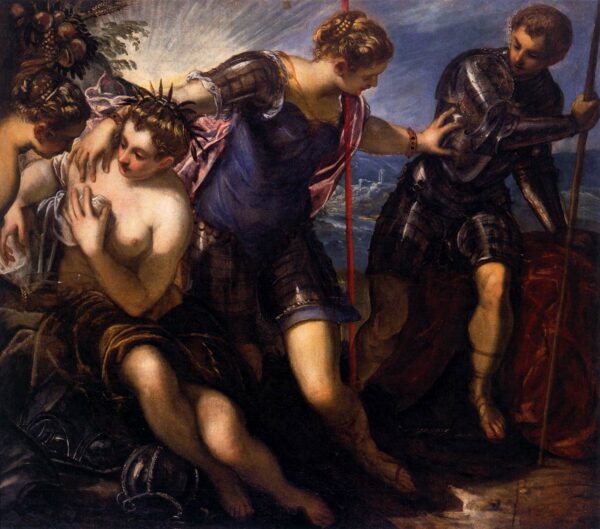
What Have the Romans Ever Done For Us?
Monty Python’s Life of Brian asked the famous question, “What have the Romans ever done for us?” The answer might have been, “Given us astrology.” Of course, the Romans stole from the Greeks, but the cast of characters we use in our horoscopes today – Mercury, Venus, Mars, Jupiter, Saturn and so on – are all imports from Rome. Astrology is based on Latin.
These gods and goddesses which lend their names to our planets, asteroids and other heavenly bodies were imported to Britain around 2000 years ago in classics like The Metamorphoses (Latin: Metamorphōseōn librī: “Books of Transformations”) by the Roman poet Ovid.
This is the book that inspired Geoffrey Chaucer and William Shakespeare – one of the reasons you will find Roman goddesses like Fortuna playing such a starring role in Shakespeare’s work. Fortuna is Jupiter’s daughter, alongside Minerva, and she is an asteroid in your horoscope, just as Jupiter is a planet.
Don’t forget Aeneid, Virgil’s masterpiece, either – where you can also find out more about Jupiter’s daughters – and The Fasti, also by Ovid. These Latin classics reveal where British astrology gained many of its ideas about the planets and their meaning. In turn, the stories inspired artists and this solid foundation of art and literature slowly began to filter into the astrology we use today.
Thus, in Ovid Fasti Three – you’ll find Mars (a planet in your chart) and Minerva (an asteroid in your chart) in a famous scene which was immortalised by Tintoretto in his depiction of Minerva sending away Mars, below.
“Come, warlike Mars; lay down thy shield and spear for a brief space, and from thy helmet loose thy glistering locks. Haply thou mayest ask, What has a poet to do with Mars? From thee the month which now I sing doth take its name. Thyself dost see that fierce wars are waged by Minerva’s hands. Is she for that the less at leisure for the liberal arts?”
That’s essentially the painting you see at the top of this feature. It’s a portrait of Mars’ aggression and Minerva’s wisdom. It also helps you understand how modern astrology, art and literature have all evolved together.
How Modern Astrology Was Born in 1781
Before Uranus was discovered in 1781, astrology consisted of the Sun and Moon (the lights) and the planets Mercury, Venus, Mars, Jupiter and Saturn. This was the astrology known and loved by the Romans, who adopted the old Greek gods Hermes, Aphrodite, Ares, Zeus and Chronos and gave them new names and adapted characters. The ‘wanderers’ in the sky were given essential qualities, based on the gods and goddesses, that we still recognise today.
The Romans were passionate about horoscopes and Augustus put the zodiac sign Capricorn on a coin. Astrology was powerful and it fuelled an empire, some 2000 years ago.
To the Romans, Mercury was the messenger of the gods. Venus was the goddess of love. Mars (the red twinkling planet) was the god of war. Big Jupiter was ‘Optimus Maximus’ as the Romans used to call him – the best and biggest. Saturn was a symbol of heavy curse.
The Romans had many more gods and goddesses, of course, and saw them as a group of 12 in an interdependent circle of complex family relationships. These archetypes were shipped to Britain with the conquest, and became part of British life and culture.
In Bath today, for example, you can still visit the Temple of Sulis Minerva. Minerva was Jupiter’s daughter and advisor. She later became merged with Britannia – Rule Britannia – and I’m sure you can recognise her in this helmeted figure below.
I photographed Minerva (here, at The British Museum) for our Astrological Lodge workshops to show how strong an influence this goddess had been on the way we think about ourselves on this small island – particularly in terms of female strength and power.
Minerva takes pride of place in The Enlightenment Room at The British Museum (below) where I sometimes take students, so they can see her alongside her father Jupiter, Saturn, Neptune, Apollo and the other Latin family members.
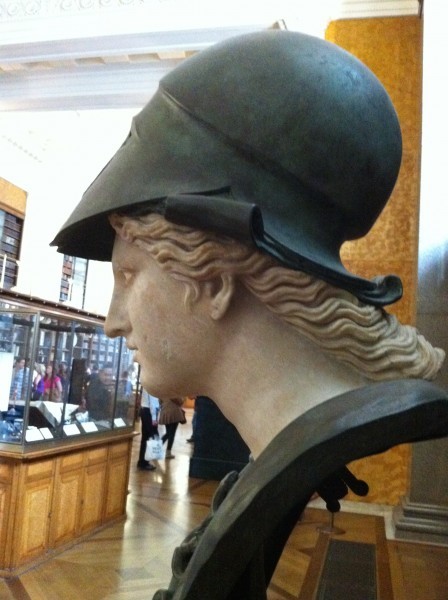
The Dii Consentes – Twelve Gods and Goddess for Twelve Signs and Twelve Houses
The Dii Consentes was a list of twelve major deities, six gods and six goddesses, in the pantheon of Ancient Rome.
The gods were listed by the poet Ennius in the late 3rd century BC –
You’ll notice Saturn and Uranus (known to the Greeks as Ouranus) are missing from this family of 12 gods and goddesses! What is interesting, though, is that the Romans saw their deities in a group of 12, and they were sculpted in the round. This is an intriguing mirror for today’s modern chart with its 12 houses and 12 zodiac signs in a circle.
Here is something else about the Dii Consentes. Apart from falling into a natural circle of twelve, they are also evenly split between male and female deities. You can find the asteroid Juno, baby planet Vesta, asteroid Minerva, dwarf planet Ceres, asteroid Diana, planets Venus, Mars, Mercury, Jupiter and Neptune in your horoscope right now. Look for the asteroids Vulcan (husband of Venus) and Apollo (son of Jupiter) too.
Astrology evolves over time, reflecting the technology (powerful telescopes were very new technology in 1781) as well as society. Back in 1781 Uranus was a symbol of rebellion, revolution and independence. He was found and named in the year that the American War of Independence climaxed and ended.
Apollo, the powerful asteroid who was named for Jupiter’s son, is a good example of how astrology expands over time, keeping in step with technology and society. Without software like Solar Fire you could never find him in your chart, or by transit. And here’s the thing. Apollo was bisexual. He loved men and women equally. He has emerged in your chart, as a horoscope symbol, just as gay, lesbian and transgender marriage – equal partnerships – have also emerged!
Feminine Archetypes in Modern Astrology and Feminism
After the shock and excitement of William Herschel’s discovery of Uranus in 1781 came the discovery of Ceres in 1801. She was the first of what would become a huge wave of new feminine archetypes, as feminism grew around the world.
Ceres was celebrated as a new planet in 1801 and joined Uranus on every European astronomer’s list. She was then followed by the planet Neptune in 1846 and finally the planet Pluto in 1930, named by the British schoolgirl Venetia Burney.
By the 1850’s Ceres had been reclassified as an asteroid, but in 2006, astronomers changed their minds again and she became a dwarf planet. Also that year, Pluto was ‘killed’ by astronomer Mike Brown, and dropped from the Solar System. Astrologers kept using him in their charts anyway, but his new official status was equal to that of Ceres – dwarf planet.
Slowly but surely, astrologers like me who had majored in the classics at university, were beginning to see that astronomers like Mike Brown were achieving something really important for horoscope authors. They were putting the extended clan of Italian deities and planets back together.
Rubens (below) is just one painter who grouped the gods and goddesses as a unit in this way. Below, you can see Venus, Cupid (her son), Bacchus and Ceres at play. Bacchus is the son of Jupiter – another clan member. He is an asteroid in modern astrology, along with Cupido (Cupid). Following the tradition set in 1781, astronomers are enabling astrologers, by not only finding these objects, but naming them. Uranus, named by Johannes Bode, was specifically chosen as he was the father of Saturn and grandfather of Jupiter, who preceded him in the Solar System. Ceres, the planet found and named in 1801, had also been related to Jupiter, through her role as mother-in-law to Pluto.
Using Ceres in the Horoscope – and Adding Diana
I began using Ceres from 2006 in my horoscope work for Elle, Vogue, Cosmopolitan and Harper’s Bazaar with immediate results. In fact, using Ceres in charts helped my female readers understand Pluto with all his issues about power and control.
I predicted Brexit using Ceres. She stood at 23 Aries on the day Britain voted for freedom from the European Union, conjunct Uranus at 23 Aries, quincunx Mars at 23 Scorpio. Even an absolute beginner in astrology could have picked that one! The great thing about using the whole Roman/Latin family tree is that they don’t just speak to you, they shout at you. This makes specific prediction easier.
The twice-reclassified dwarf planet Ceres also told astrologers something vital about horoscope symbols, when they welcomed her back in 2006.
Asteroids named for deities in the family tree, should always be included in a chart – partly because at any given moment, astronomers could change their status. Vesta, for example, began life as an asteroid but was promoted to baby planet – making her role as Saturn’s daughter important. Understand her, and you will get to know him, too. Why not use the whole family?
It became clear throughout this period of radical decisions about Ceres and the rest – by astronomers – that it was the family tree status of the archetypes, not the size or distance of the space rocks, that mattered.
Restoring the family tree in this way also brought strong feminine archetypes back into astrology. Formerly, Venus and the Moon (the lover and mother) had been the only routes to womanhood in a chart. Defined by their relationships with men and not in their own right. The asteroid Diana, for example, is named for a goddess who rejected both marriage and motherhood.
Adding Ceres’ daughter Proserpina began to restore the balance, and with her, the gates opened to the female family members surrounding Venus, Jupiter, Saturn and Neptune.
The discovery of Neptune’s wife Salacia in the year of the Asian Tsunami (she rules the ocean, along with her husband) was groundbreaking for astrologers. She is a Trans-Neptunian object. Salacia is the newest addition to the Latin family tree which was updated all those years ago with Neptune in 1846.
Stephanie Johnson and Zane Stein have now created a special program for me within Solar Fire, which shows you Salacia, Diana and the rest at a glance – which you can buy and use immediately.
If you are a Premium Member you will already have your birth chart with the complete Roman family of planets, asteroids and the rest. This special program which I developed with Stephanie and Zane also enables you to track the transits too. I love it!
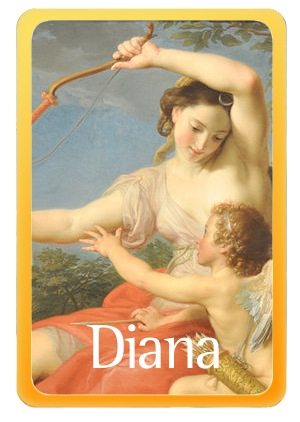
Solar Fire Software and Modern Astrology
Before we moved into the 21st century with Stephanie Johnson’s Solar Fire software, created with the brilliance of Zane Stein, astrologers were stuck with some fairly out-of-date and sometimes quite baffling manuals as their handbooks. These were the old ephemerides, which contained oddities like Black Lilith (a Jewish archetype rather than a close relative of Venus, Mars and the rest).
I sometimes have students at lectures showing me Black Lilith in a free computer chart they grabbed somewhere and wondering what she means. Well – I don’t know either! She’s really part of a different system of divination. Rather like those other symbols, Eris (Greek) and Sedna (from a different country and culture entirely) she doesn’t have a family relationship with any of the old Roman gods.
Some of the old 20th century publishers and programmers also confused a whole generation of students with the inclusion of Pallas Athene, who was the Greek goddess of wisdom, who was replaced by Minerva some 2000 years ago.
Using Pallas, or Pallas Athene, as she is sometimes called, alongside Jupiter and Saturn, would also have baffled the Romans because to them, she had vanished in their culture, only to be replaced.
If you’re going to use horoscope symbols named after Greek gods and goddesses, like Pallas or Eris, then you may as well start using asteroid Zeus, or asteroid Hermes. Yet – they are the forerunners of Jupiter and Mercury – so you will end up with a very confused horoscope.
It’s like mixing up Artemis with Diana. As you can see in this Rubens painting, below, Diana is a powerful symbol of female strength, independence and feminism – but she evolved from Artemis. There seems to be a lot of confusion out there between Greeks and Romans, but just remember – the Greeks didn’t conquer Britain and import their religion. Emperor Claudius did!
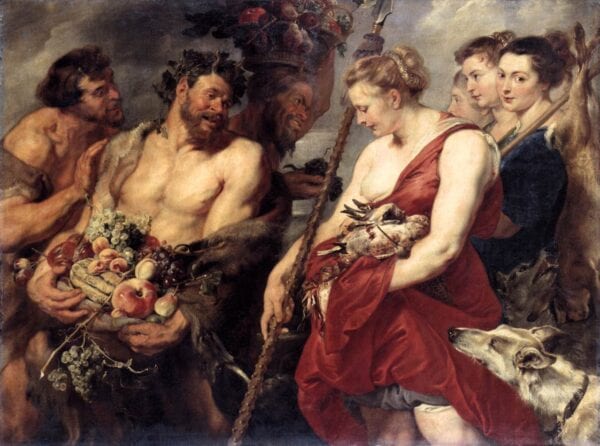
Salacia – Neptune’s Wife – a Trans-Neptunian Object for the 21st Century
We are now at a point in our astrology where a Trans-Neptunian object like Salacia can be picked up, and even given her own picture symbol, by Solar Fire software. This is tremendously exciting, because if you work with Neptune, why would you not want to include his wife? One of the great things about using the restored Roman family in this way is that understanding Salacia, helps you fathom Neptune with more depth. All of which makes for more accurate and intriguing astrology.
In fact, I wouldn’t consider making a prediction at all these days, without the whole Latin family circle to work with.
Armed with the Latin classics – not to mention the excellent series of books about Roman life and culture by my Twitter amigo, bestselling author Professor Mary Beard – you can find out more than you ever thought possible about these old Latin gods and goddesses in your horoscope.
Look to the work of Rubens, too, whose paintings help to illustrate the archetypes so well, along with painters like Klimt, who immortalised the female members of Jupiter’s family. The art tells a powerful story that helps pull your horoscope together.
In 2019, to celebrate the launch of my latest astrology book for Penguin, we will be putting together a beginner’s course online which helps explain how astrology evolved over the last two centuries, and the part that Roman history and Latin texts still plays today, in assisting us with our predictions. If you’re a Premium Member, this will be announced on your newsletter. I’m really looking forward to some daytime events at The British Museum, if you happen to be in London, where we can not only see Minerva and Jupiter in The Enlightenment Room – the father and daughter – but also Aesculapius and Bacchus, upstairs! Keep reading your newsletter so you can be waitlisted for this in 2019.
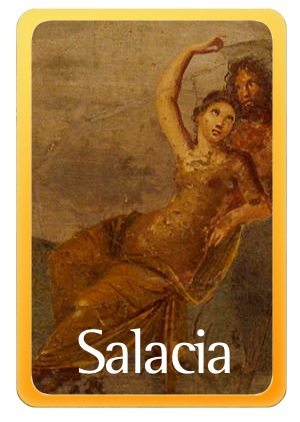
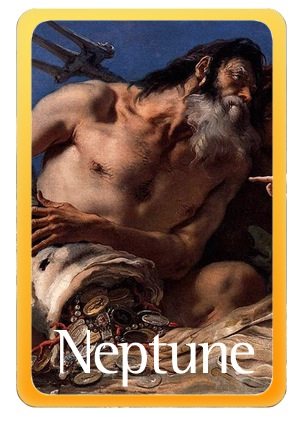

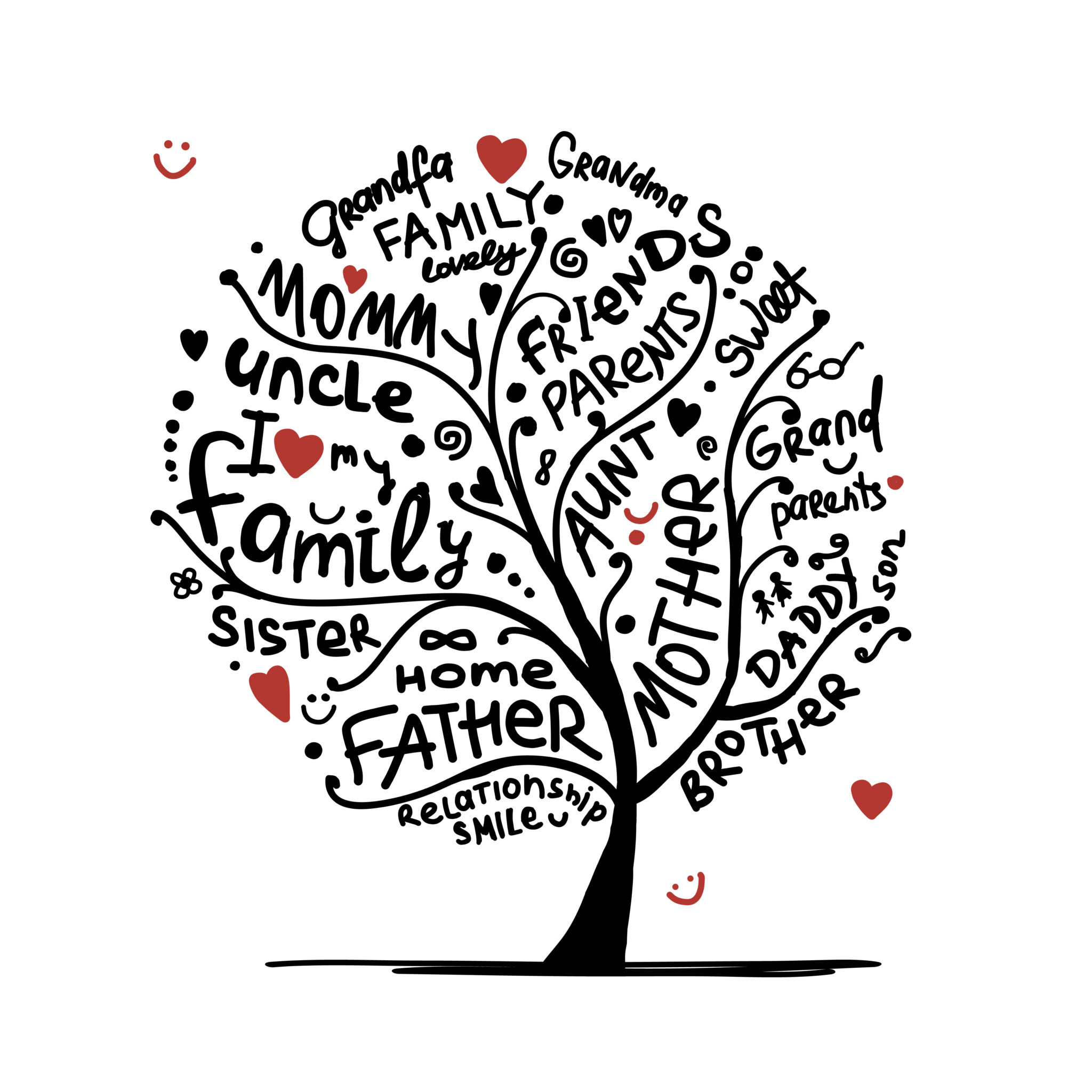




12 Responses
Love this article Jessica. Looking forward to the beginner’s course, learning and understanding more. Thanks!
Thank you, you would be very welcome to join.
Many congratulations on the book, Jessica – I’m old school and like a hard copy, me! The course sounds really great – any idea yet which month you might launch?
Thank you! Yes, this is definitely one for the bookshops and I’m excited, as it’s been a while since Penguin and I worked together. I’m glad you are interested in Sun Sign School. I have been talking to Susan Miller about this, and what I think might happen is a series of events in 2019 in major cities like Melbourne, London and New York – along with online podcasts, vodcasts and e-books so that people who want to become Sun Sign astrologers can begin private tuition. Joanne Madeline Moore and I have been discussing the best way forward, so stay in touch about this – I think we’ll be announcing a schedule around January 2019.
Oh, that does sound exciting! Good luck with putting it all together and, yes, I will watch out for further news. Thanks very much.
My life had been miserable between March and June. Broken promises, changed plans, and so much other turmoil and chaos had left me unable to fulfill my goal of becoming a writer. I don’t know what to do. I’m starting to think that I’ll never make it as a screenwriter, or a writer.
I am so, so sorry for being a pandering, Jessica but I need help to find a way to get my goal back on track.
I’d like to assist but you don’t enclose your time, date and place of birth.
Sooooooo keen for The British Museum events. I used to be a tour guide in Rome, this article is next level inspiring and exciting!
Thank you! I just confirmed The British Museum for May 2019 so please keep checking for dates and times.
Hi Jessica,
My question is regarding Pluto in Libra in 7th house… I am strongly Aries 28-3-1977, 11:40pm born in India with Pluto in Libra at 12degree (r) and Saturn in Leo at 10 degree(r).
So as per the placements you can well know that I yearn for true companionship yet have never been successful in them…. So my question is that do this placement of stars always force me to stay a loner or will I find true committed love?? I am very keen to know what remedies can be done so that the negative effects of this placement on true love nullifies and one can have a happy life with significant other? Is there a way or some tips to understand how best to deal with such placements so as to live happily ever after?? Thanks
Astrology is really about seeing what is there, and working with it. Pluto is power, control, passion, obsession, domination – and always compromise – in the Seventh House of marriage – you need to work at relationships. You have already found this out. Saturn in the Fifth House is about parenthood and that is also going to be hard work! There are no remedies, but there is learning, awareness and knowledge. Start by looking up Pluto in Libra and Saturn in Leo and understanding the Fifth House and Seventh House better. Write a journal and try to see where the habitual patterns are in past relationships or friendships. Meditate a little – find time and space, peace and quiet – and ask your spirit guide helpers for insights and understanding. That’s progress. That’s astrology.
Thank u so much for ur reply… Really appreciable, scientific n insightful..god bless